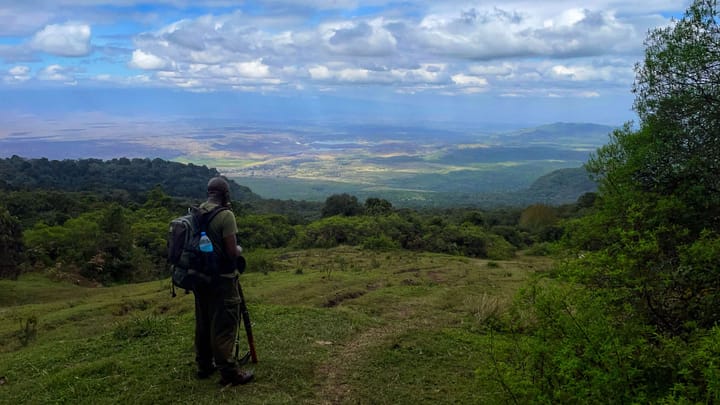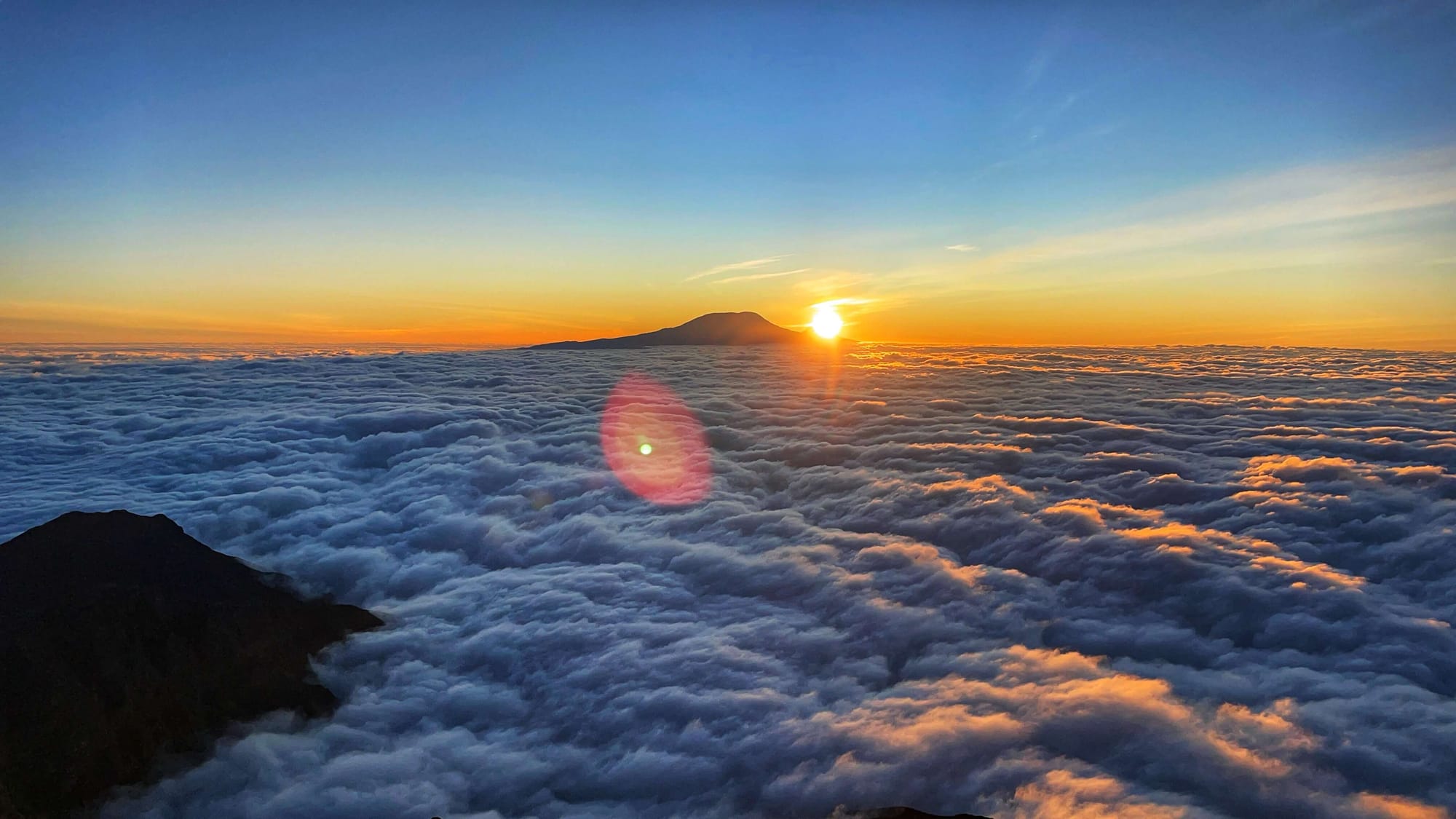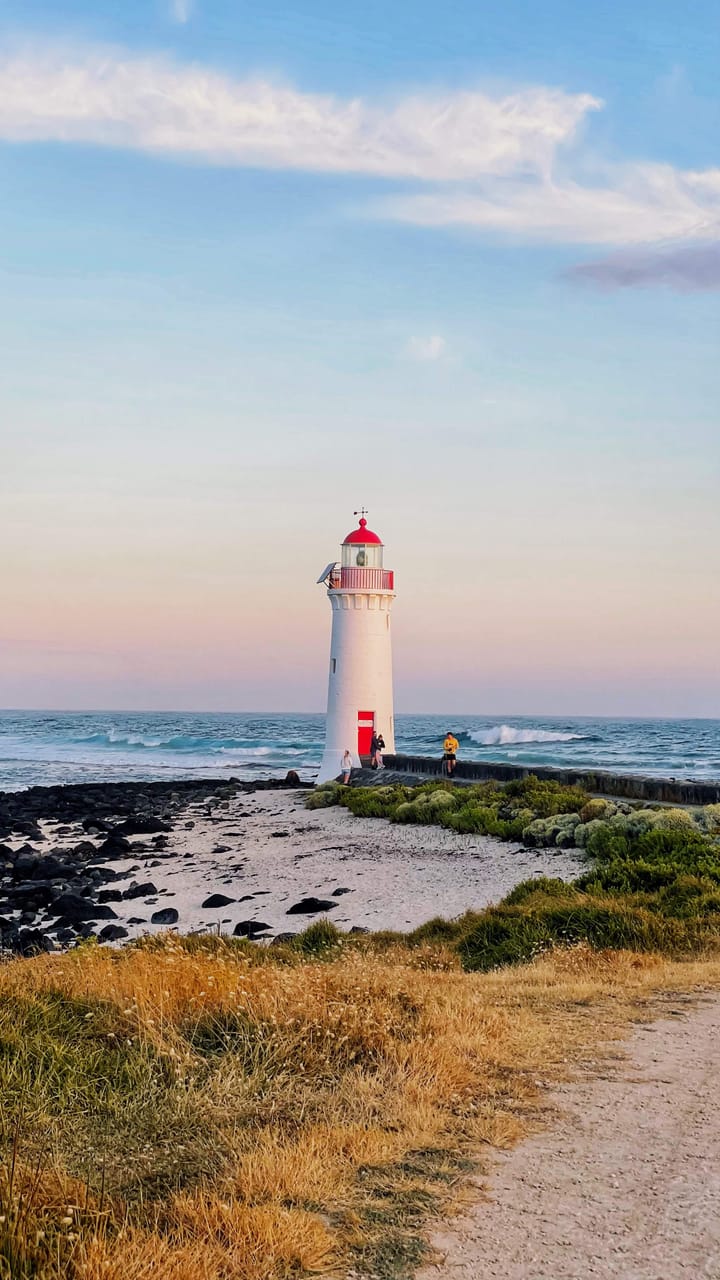I have a friend who has been in two Ironmans and a handful of shorter-distance triathlons. If you’re not familiar with this particular athletic endeavor, the Ironman is comprised of three events, all of which are feats on their own:
- 2.4-mile swim
- 112-mile bike ride
- 26.2-mile run (marathon)
Having run a marathon myself, I can’t even begin to imagine training for a marathon plus a long distance swim and bike ride. People who do largely have no life beyond training, sleep, and work.
One night over dinner, my friend revealed that she was feeling a bit down. She had just come back from an Ironman that she had spent the better part of a year training for.
“I don’t really know what to do with all of this time,” she admitted. “I feel like I lost my sense of purpose.”
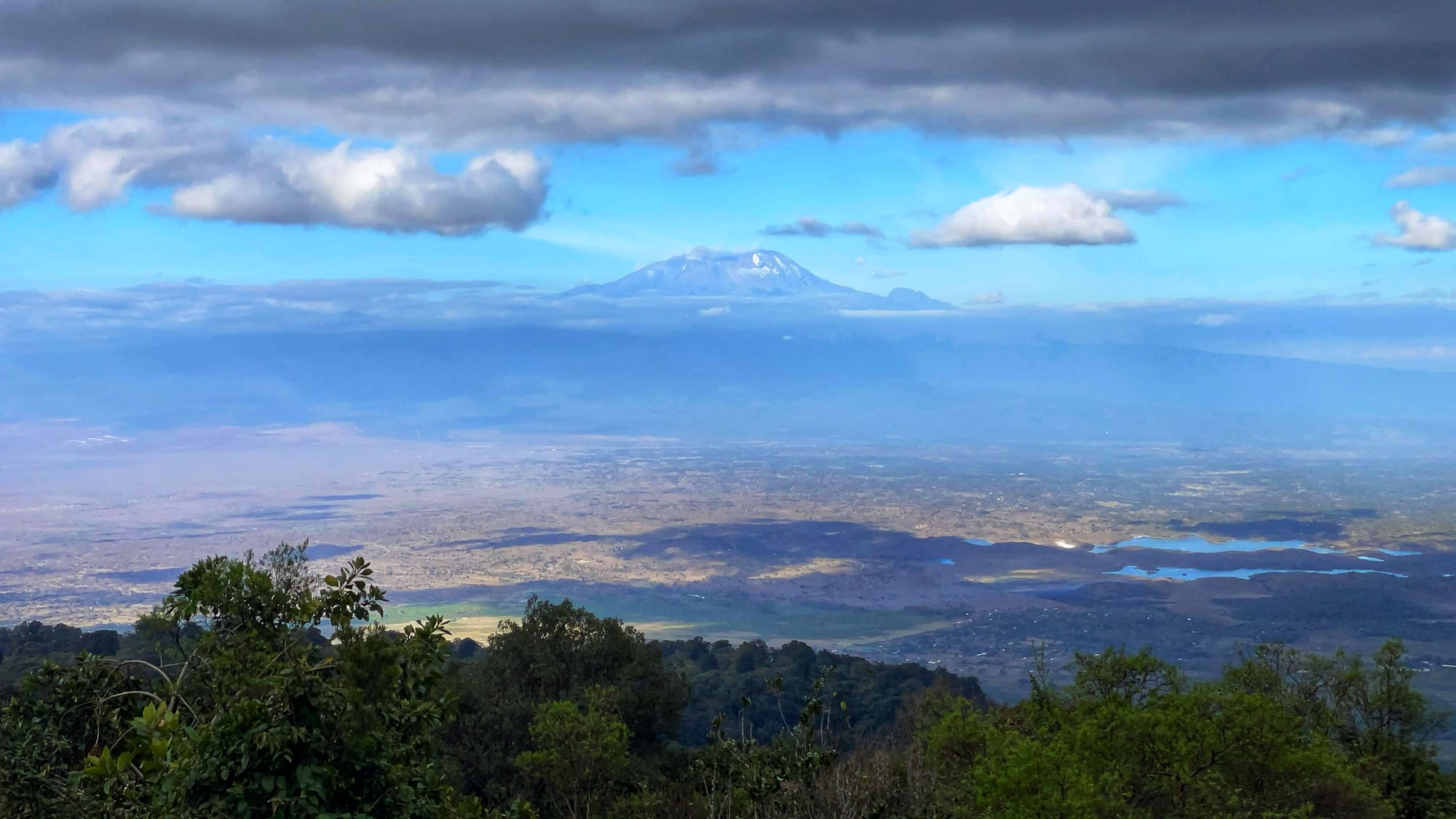
It is a sentiment that most people will experience at least once in their lives. We are experts at climbing up the mountain – studying for that entrance exam, working hard to land that account or promotion – but not at coming down. No one really shows us how to do it, or even talks about it.
Pick any Hollywood film about any great human achievement and what is the story about? How they got there. What happens after they reach the goal gets five minutes of screen time at best – and clips in the credits at worst.
What happens when you reach the destination? What comes next?
It is why, I think, there is a spike in male mortality immediately upon reaching retirement. What do you do with yourself when there is no longer something to work toward? How do you find meaning and purpose in life? How do you write the story when this is the part where it typically ends?
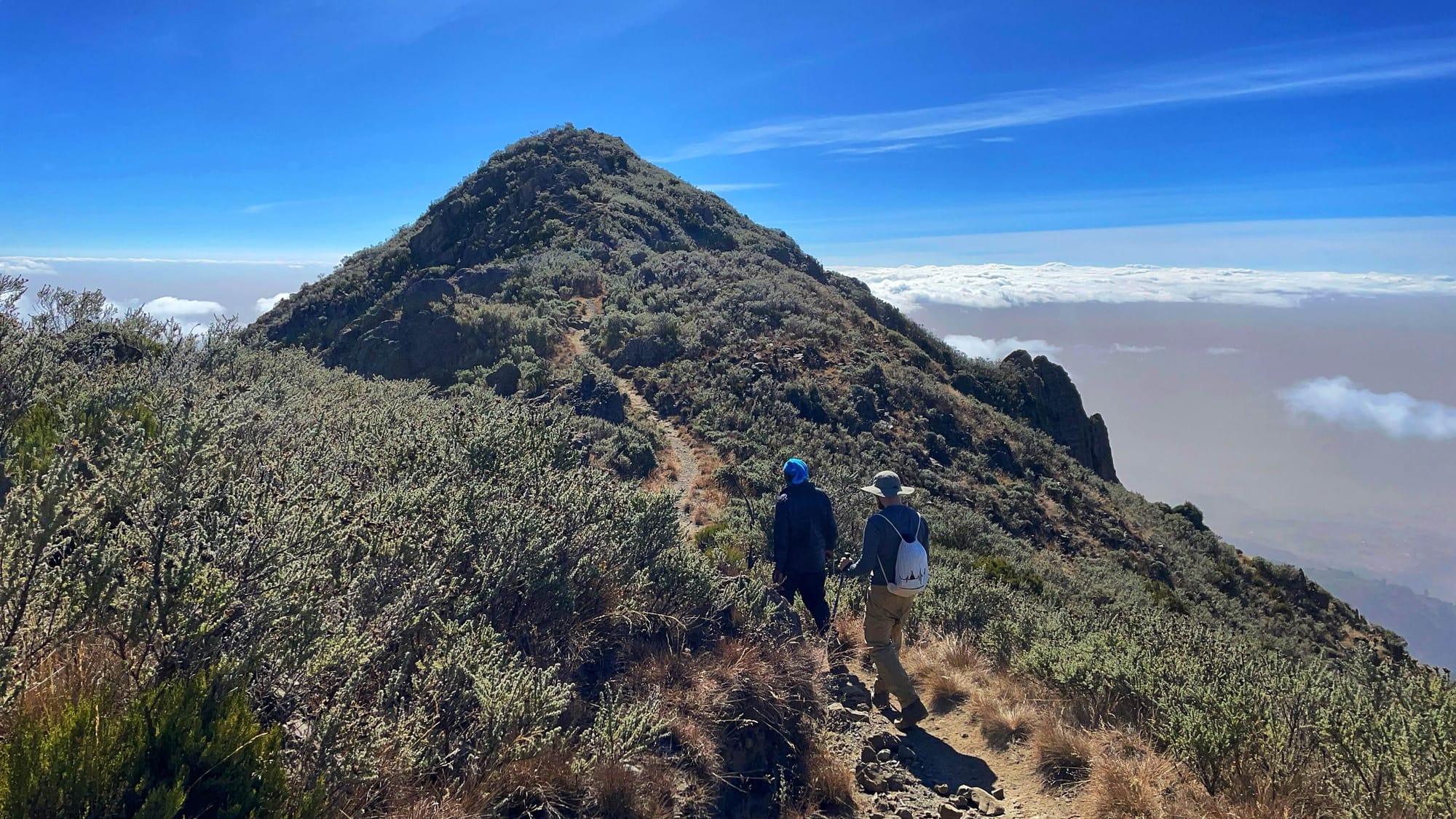
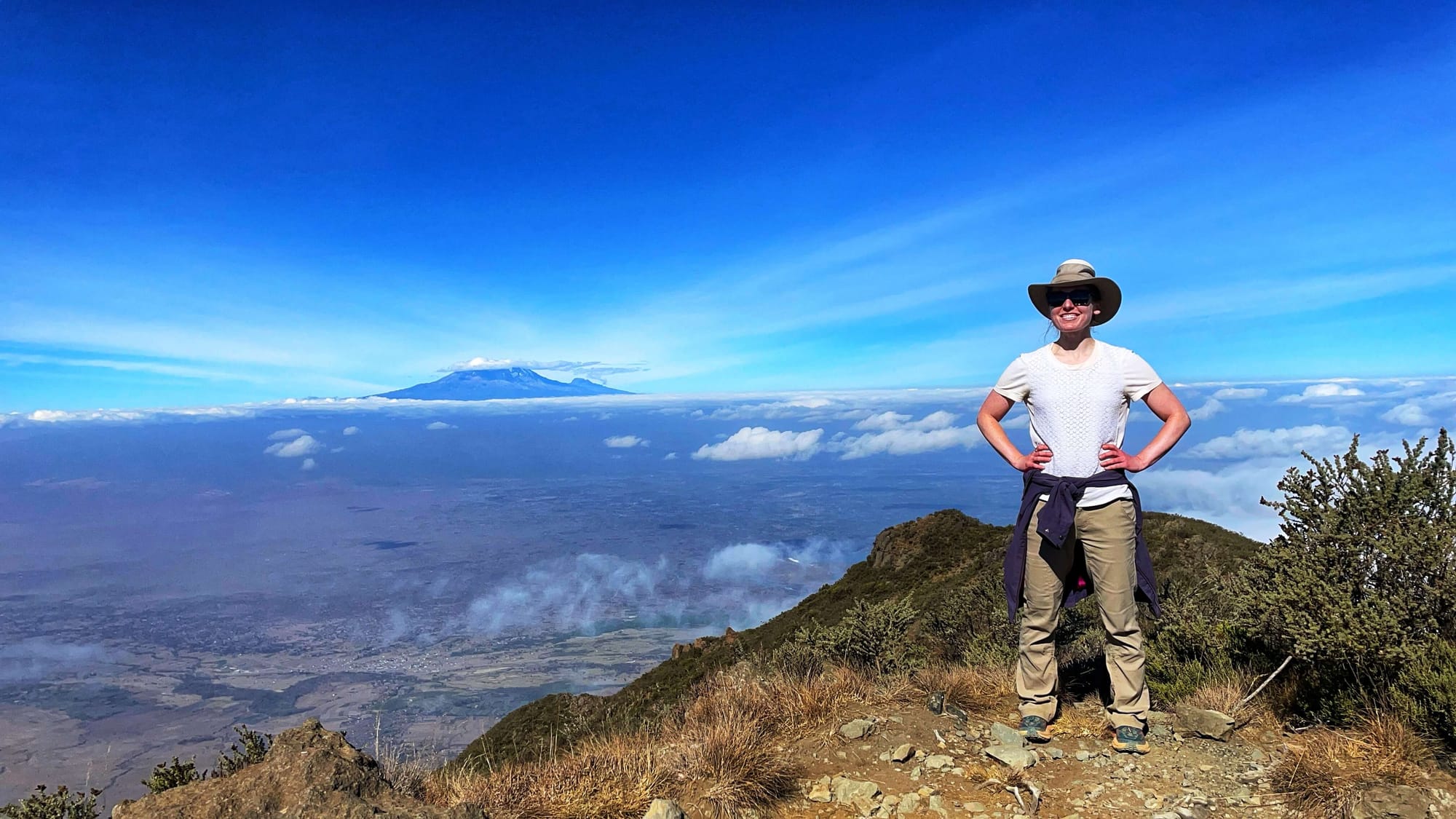
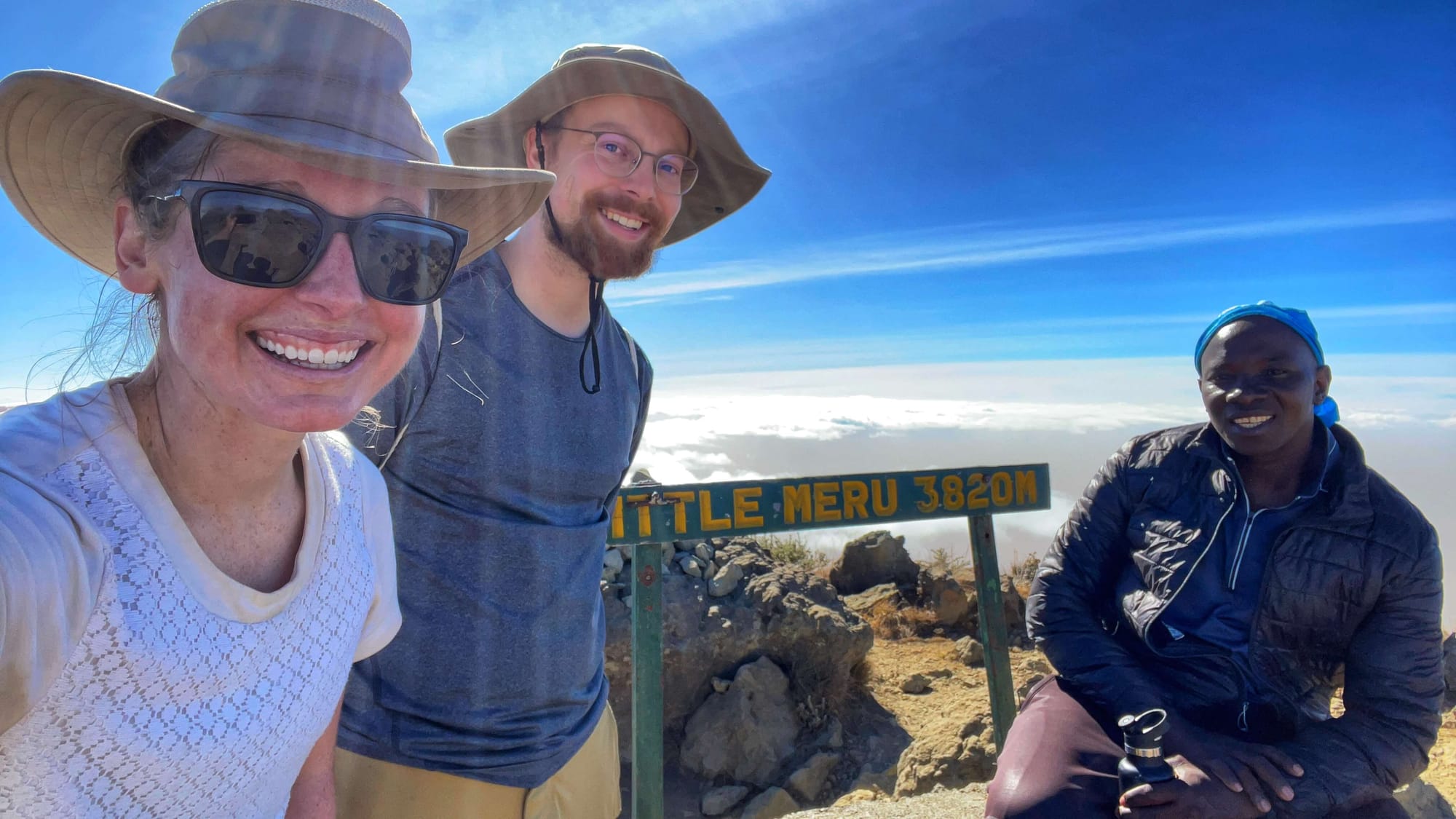
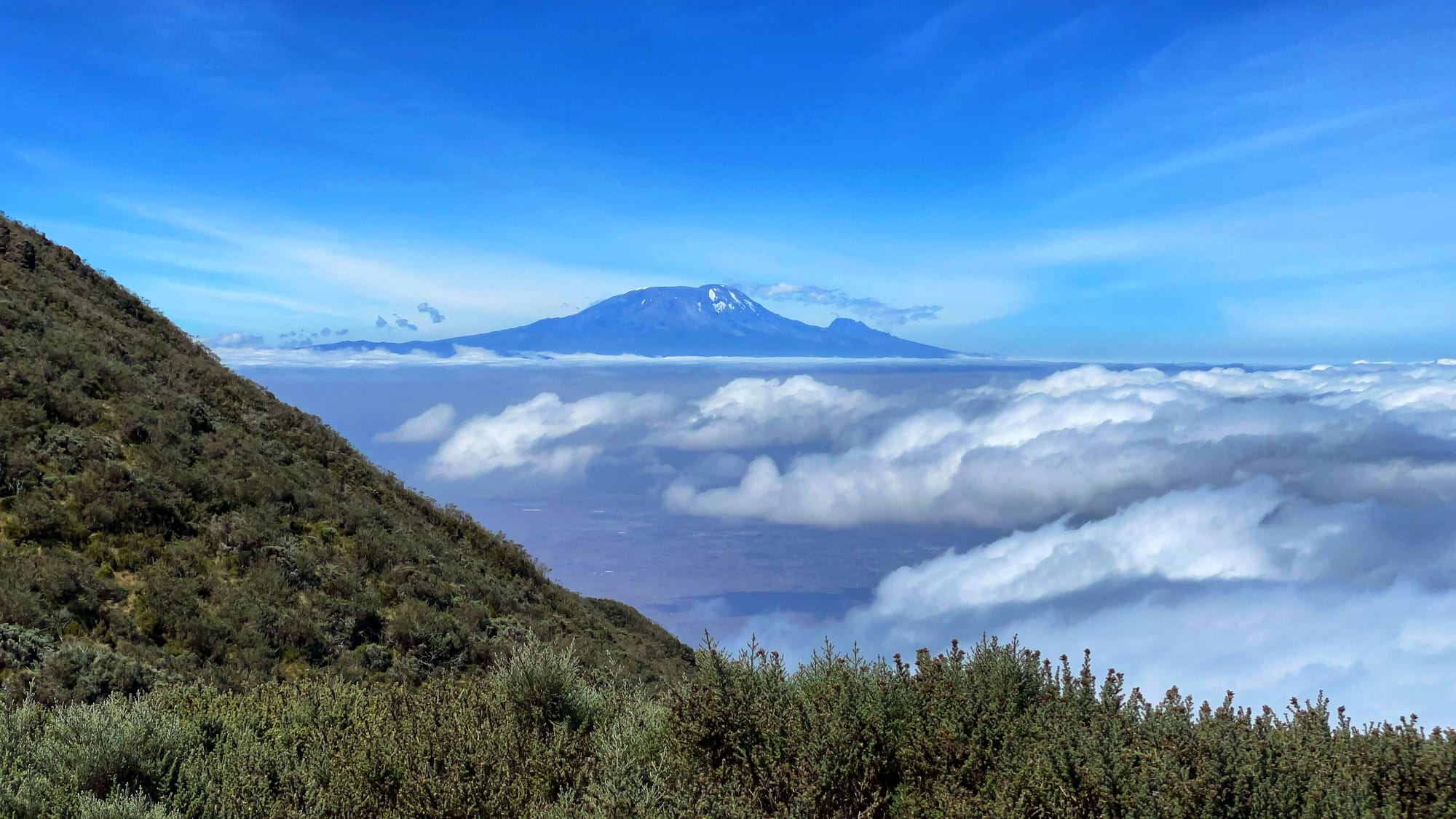
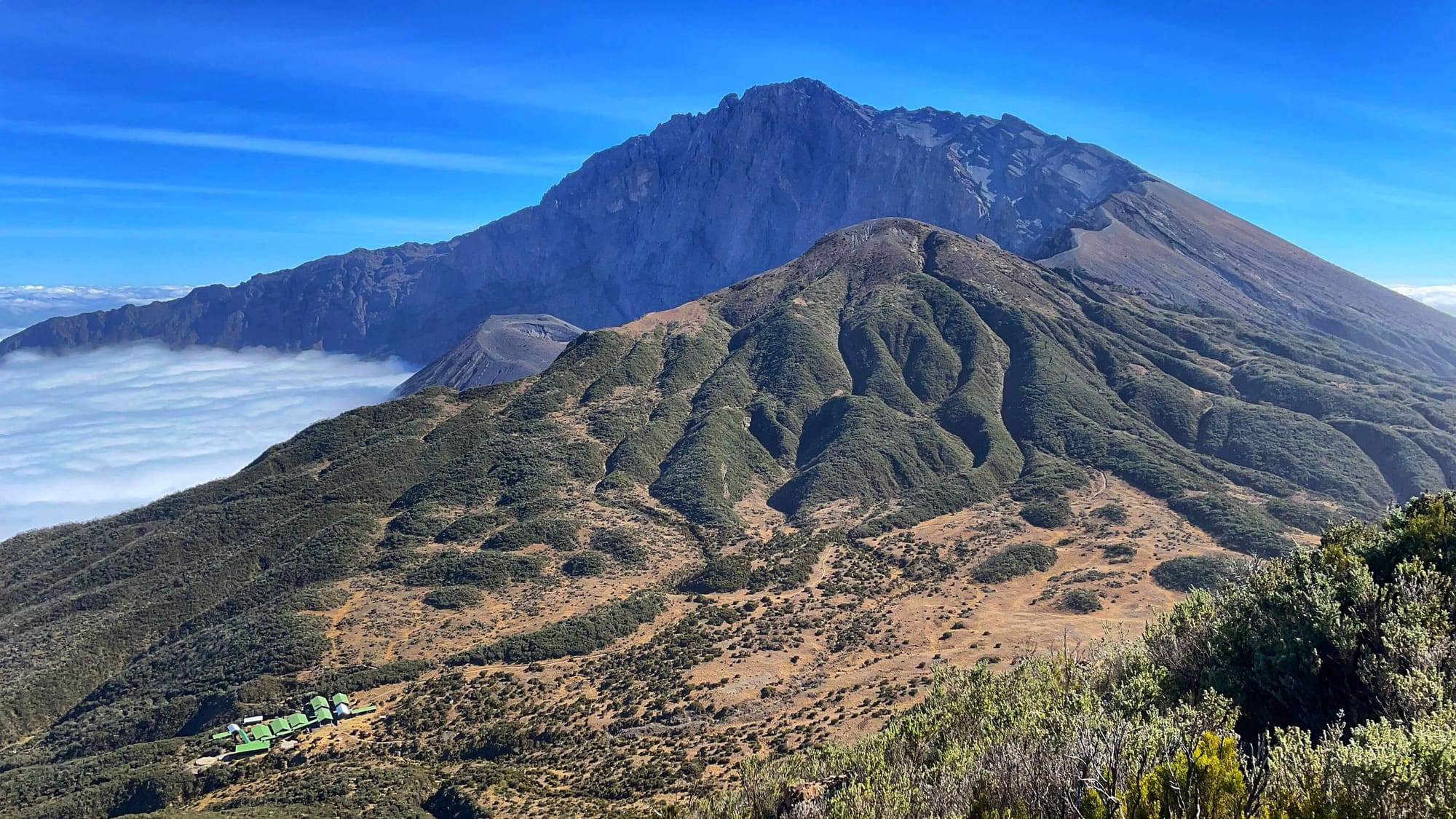
Click any image to view larger - Left to right, from top: (1) A guide and hiker approach Little Meru on acclimatization day before the summit; (2) Clara Ritger poses on Little Meru with Mount Kilimanjaro in the background; (3) Clara Ritger, hiking companion Kai, and their Tanzanian guide Baraka pose for a photo at Little Meru summit (3820 M ASL); (4) View of Mount Kilimanjaro. The smaller peak (Mawenzi) that you see on the right is deceptive – at 5149 M ASL, it's just shy of Mount Kenya and the third highest summit in Africa. (5) View of Mt Meru and its cinder cone (where the lava erupts) from Little Meru. Mt Meru is unique in that one side of its surface collapsed, leaving a half moon shape that makes for great views of Kilimanjaro from its peak.
Metaphorically and literally I am terrible at the come down. As an avid global hiker, I’ve had many guides look at me in shock at the pace I am able to keep on my way up the mountain.
“You should be a guide,” one of them told me, laughing. I am fast, my legs are powerful, and I push up the mountain tirelessly. There isn’t a mountain that I can’t climb. There isn’t an uphill battle I won’t win.
And yet, I am below average when it comes to the downhill. Going down is scary. My footing is less sure. I’m guaranteed to fall at least once. The same gaps my short legs close easily and quickly on the uphill are slow reaches and “try agains” on the downhill. I watch as my guides' amazement becomes bewilderment at my slow, deliberate pace on the way down.
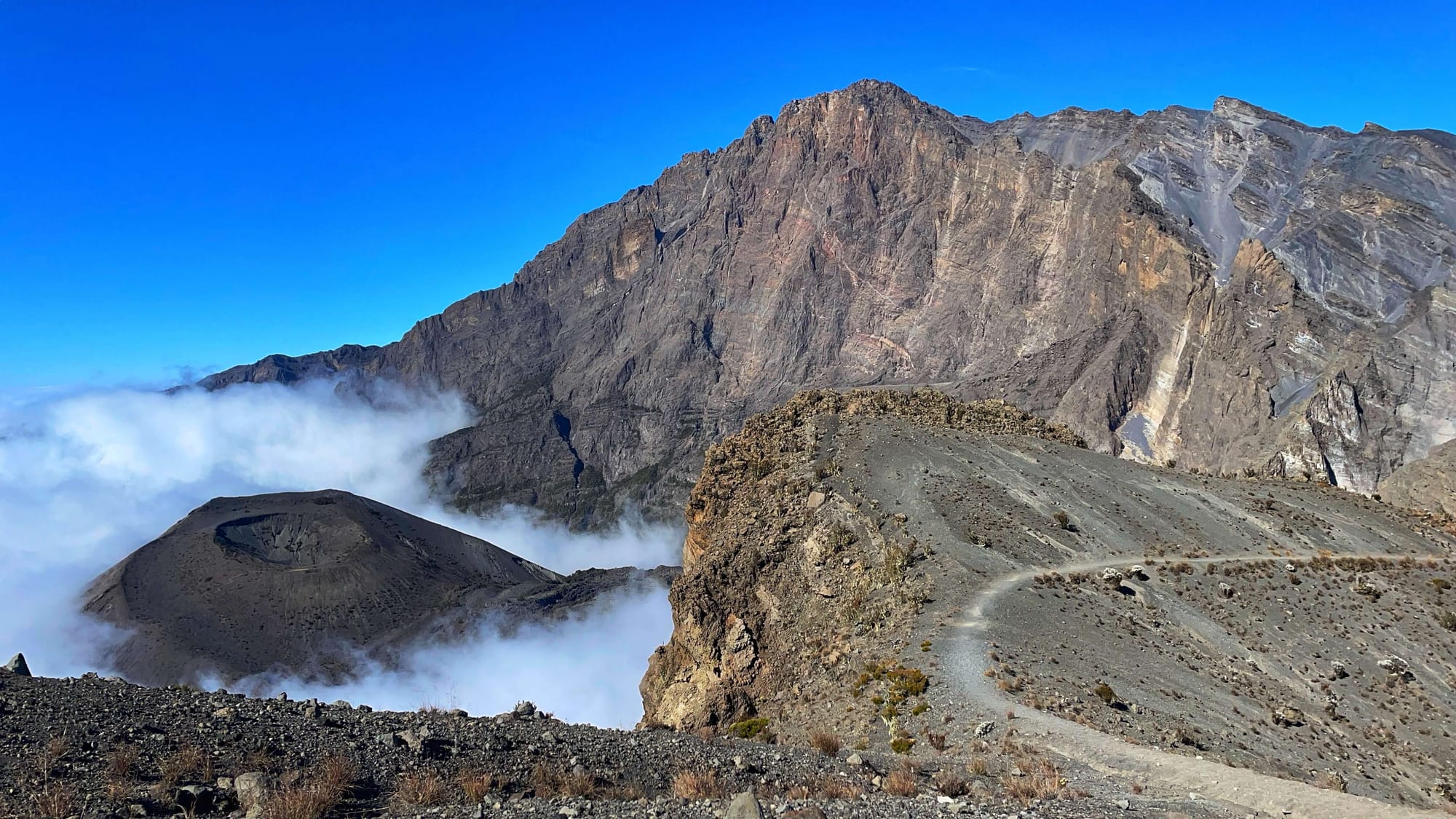
I am not skilled in coming down. And that is exactly why I flung myself into the far corners of the world, to step with ease and grace into a period of rest, recovery, and in some sense, celebration – that I had no clue how to do.
Because no one has ever modeled how to come down.
What if the real work begins after you reach the top?
This is what I learned while hiking in the mountains of East Africa about coming down – from mountains, and life.
- You are not alone. Other people have walked this path before you, and will walk it after you. Some are walking it at the same time as you, even if not “with” you.
- Allow others to go first and lead the way, and
- Don’t be afraid to make a different choice after seeing how their choice pans out.
- You'll have more fun on the come down if you rest before starting the journey. (More on this below ⛰️)
- Go at your own pace. It might take you an hour, it might take you all day. There’s no right or wrong way to come down. Your journey is yours.
- Recognize when you are going too fast to try to keep up with others and slow down to a pace that feels right to you. Accept that slowing down is okay – even necessary – to prevent injury or illness.
- Use the slow time to notice what’s around you. Appreciate the view coming down.
- Most of your time is the journey. The view from the top is fleeting.
- Remember to enjoy the journey.
- Taking breaks makes the journey more enjoyable.
- Sometimes the view is better halfway up but you don’t know until you get to the top. Again – enjoy the journey!
- Sometimes you climb to the top because you’re supposed to, rather than appreciating where you already are.
- But that’s okay, because what goes up must come down.
- The view looks different coming down, even if you are taking the same route you followed up. You never truly experience the same thing twice.
- Accept that you are probably going to fall no matter how much care you take on the way down.
- Do not let the failures of coming down distract you from celebrating the success of going up.
- Side steps are progress even when they don’t feel like it.
- Ask for help when you need it. There’s no prize for doing it alone – but there might be a penalty, if you don’t make it out unscathed.
- Allow yourself to receive help without shame. You can receive it with shame, but it’s more fun without it.
- The descent is a return – but you don't return the same as you were before the climb.
It’s the descent that teaches you who you really are.
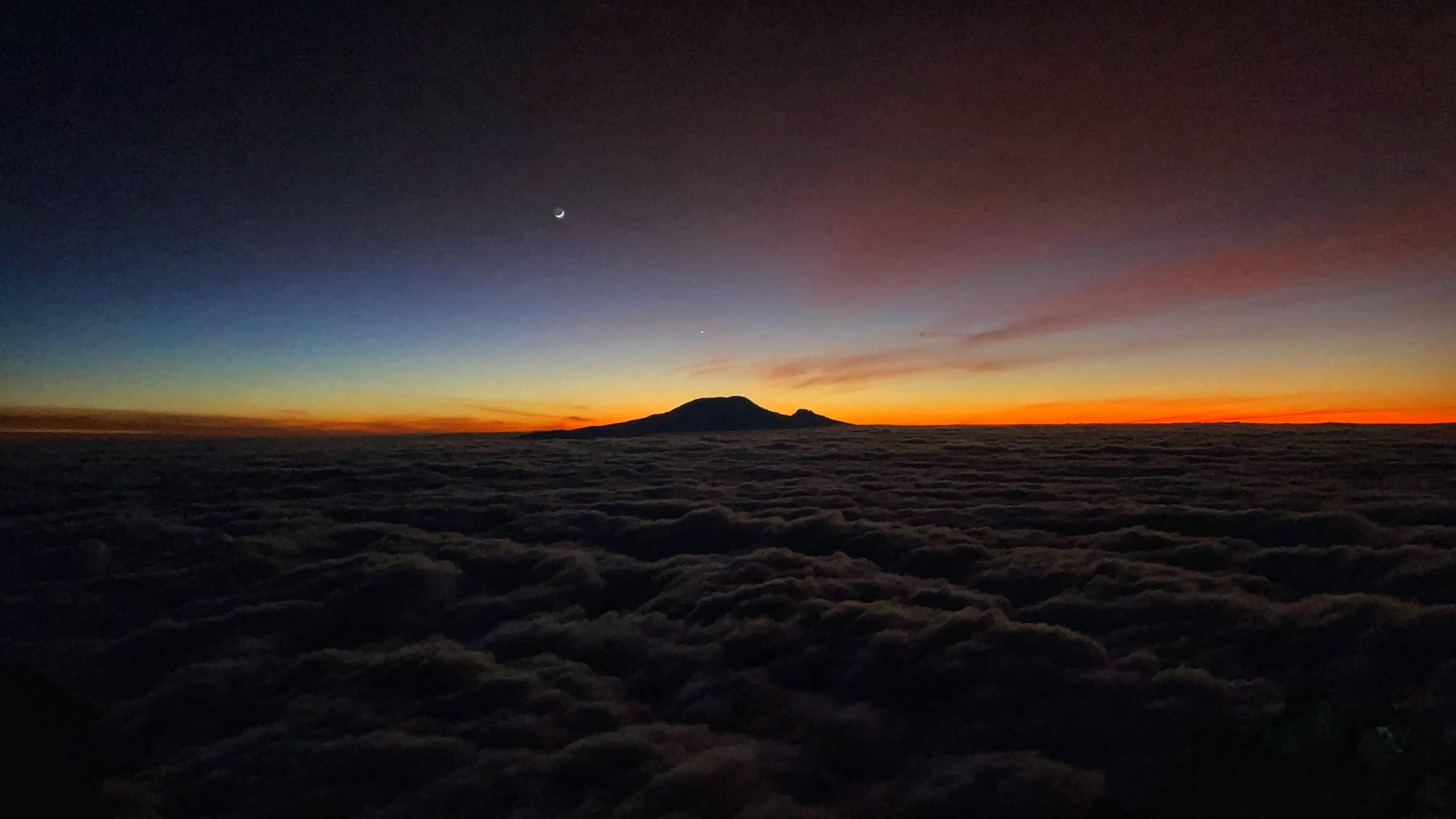



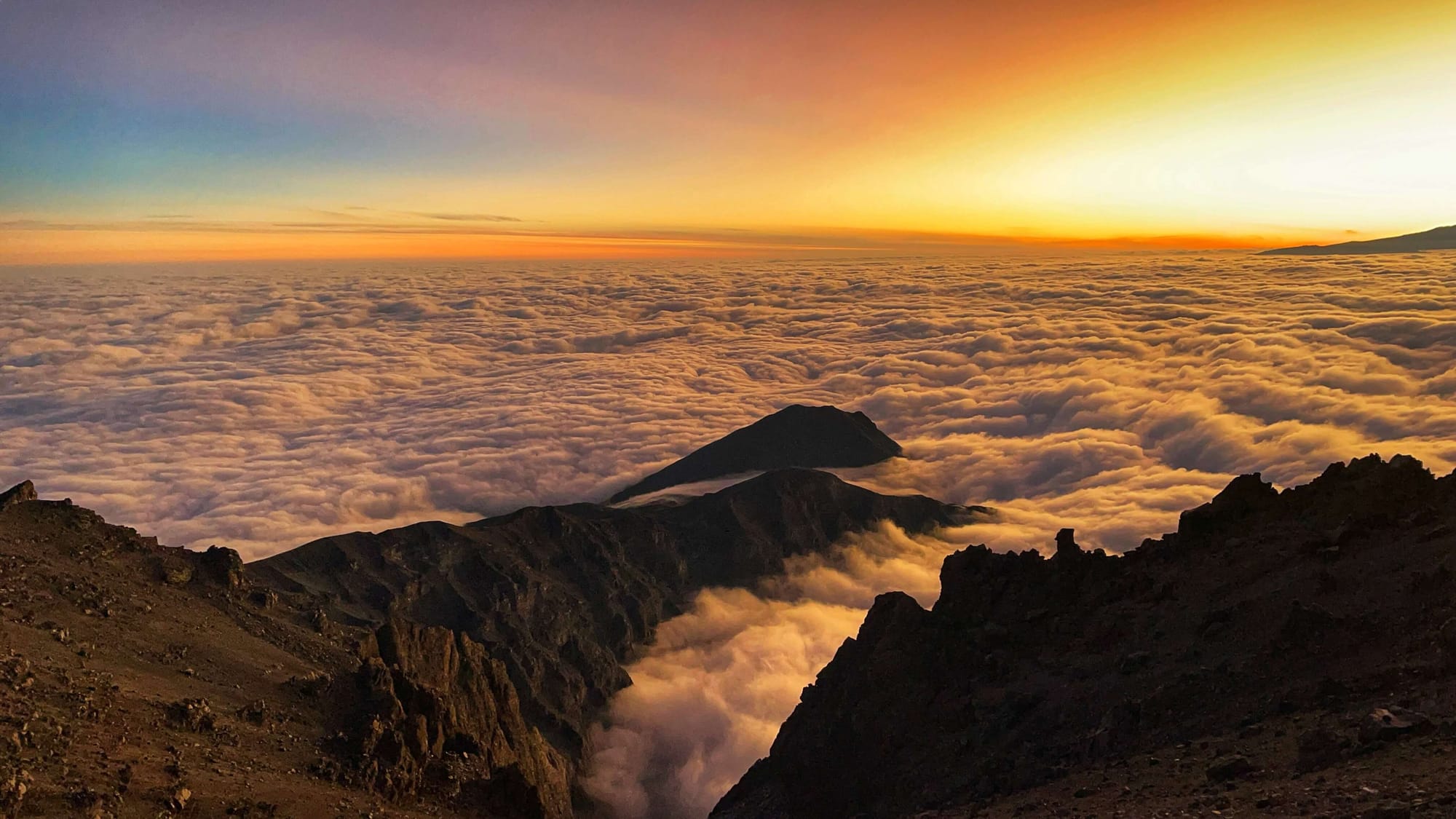
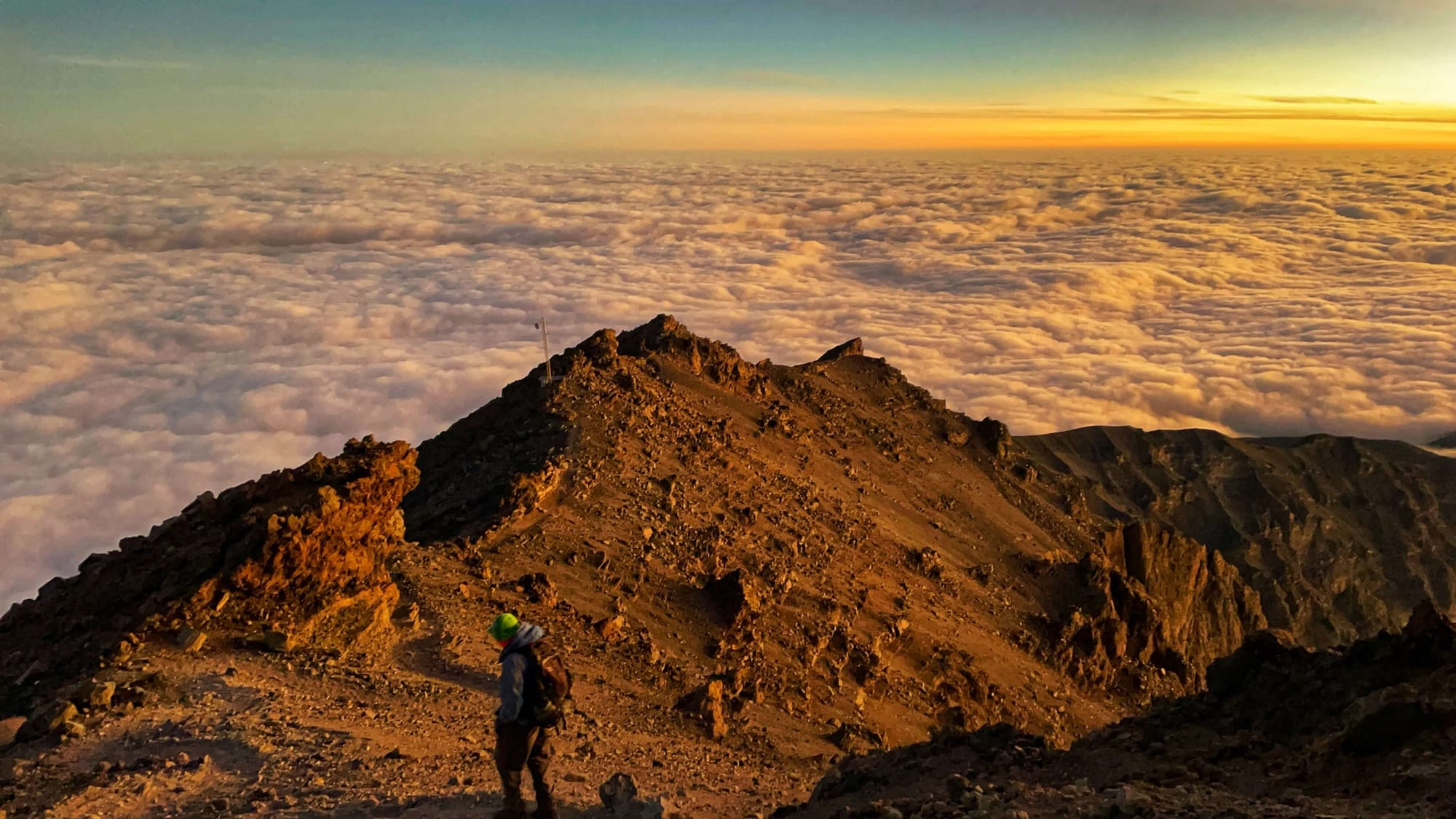
Click any image to view larger. Views of sunrise over Mount Kilimanjaro from Mount Meru, Tanzania.
Do you want a full guide on how to do any of these hikes in East Africa yourself? Mt. Kenya, Mt. Meru, Mt. Kilimanjaro... Drop a comment or send me a message. Happy trails!
Of course, seeing the sun rise over Mount Kilimanjaro is a once-in-a-lifetime view -- but it's hard to say it was fun. It was cold, I was tired, and my stomach felt queasy.
What I've learned about myself:
1. On and off the mountain, a good night's rest and regular meal times have a huge impact on my physical body.
2. My physical body has a huge impact on my mental well being.
3. Sunrise summits are overrated. Skip unless there's a compelling case for the view, or the weather (not the case in East Africa, but often the case in places like Nepal, where snow and ice are easier to cross without the added challenge of melt from the sun).
4. Resting at basecamp for a night of normal sleep after a sunrise summit is essential for enjoying the come down.
Sadly, this last point is rarely built into standard tour itineraries due to outdated science about spending as little time in altitude as possible. The book Breath by James Nestor debunks this. Spending time at altitude -- if you've properly acclimated to it -- can actually do wonders for your heart health. The more time you spend at altitude, the longer you'll experience positive effects on your cardiovascular health after your return to normal altitude.
Instead what happens on tours is that you typically summit and get off of the mountain three times faster than you came up. On Mount Meru, they wanted us to summit and get off of the mountain on the same day. (That didn't happen in part because I paid in advance for an extra day on the mountain just in case of a Mount Kenya repeat, and wound up using it to rest before going down.) On Kilimanjaro, we summited in six days and got off the mountain the day after the summit.
My body does not respond well to this approach.
There is also a such thing as reverse altitude sickness from descending too fast -- which no one I met on the mountains had heard of, and granted is rare, but it's entirely possible I experienced this, given how exhausted I felt from the rush down each mountain. I think that the slipping, falling, tiredness, and dizziness I experienced on the come down was my body's way of telling me to slow down. Of course, it's hard when you're tied to a tour itinerary to follow what your body needs.
But I'm learning to listen to my body, and I'm learning that when I do, and when I advocate for what I need, I radically improve my experience of life.
More on this to come... 🤗

Love This Publication?
We are 100 percent funded by reader contributions. Your support will keep this publication alive.
Make a One-Time Contribution